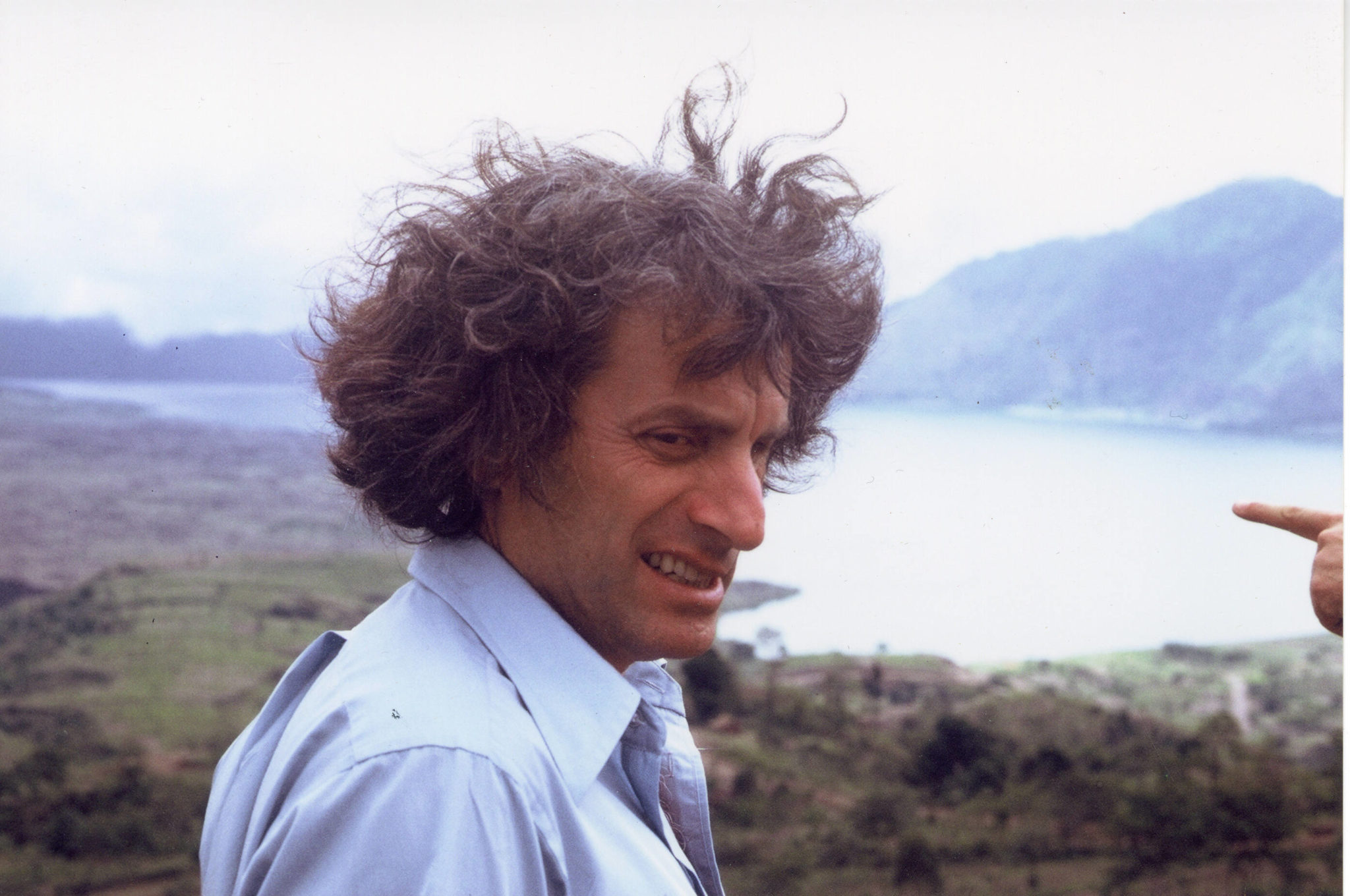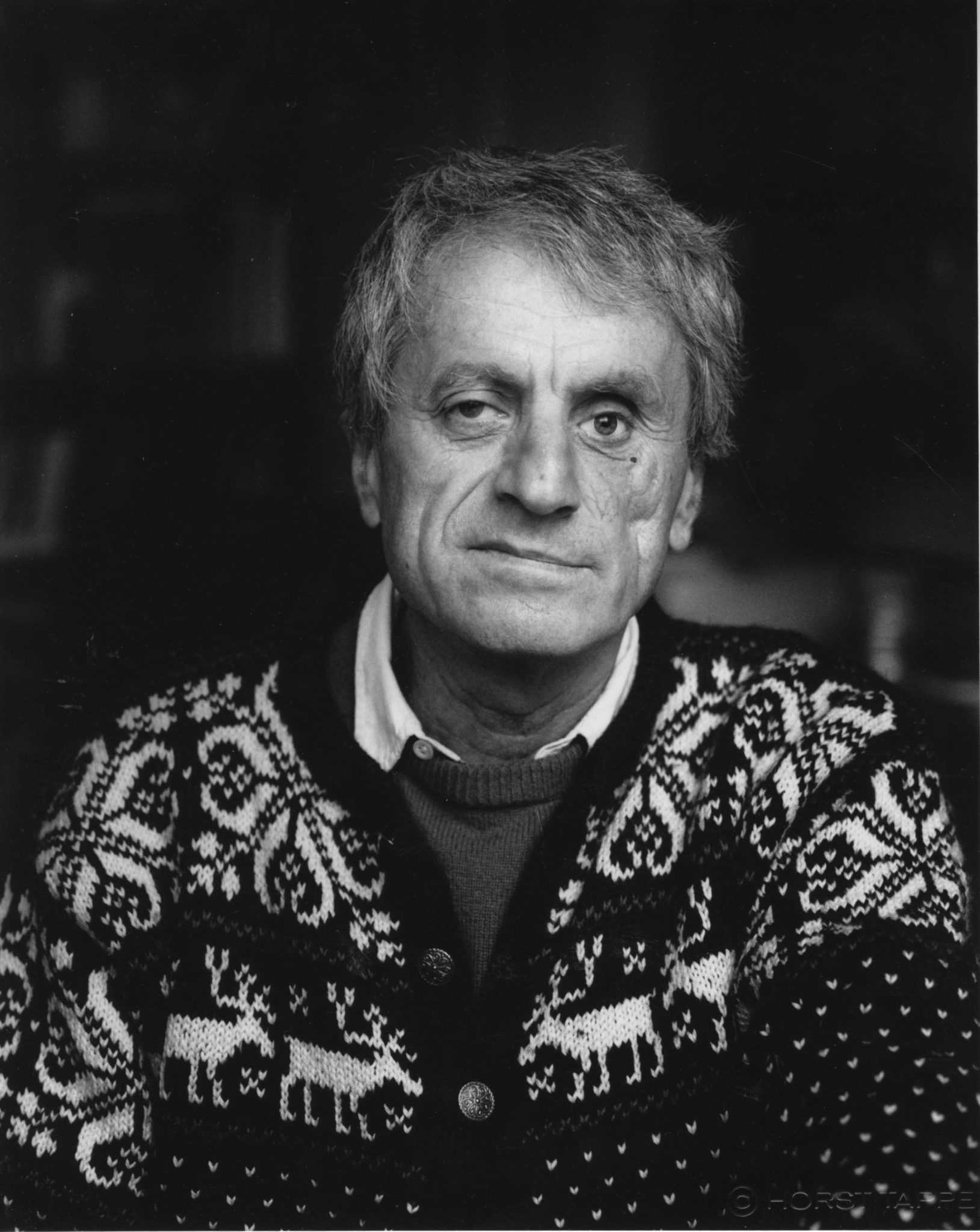Xenakis-Tage Zürich will take place on May 28 and 29 2022, to mark Iannis Xenakis’ 100th birthday. The festival was initiated by the musicologist Peter Révai, who managed to bring Iannis Xenakis to Zurich in 1986, during the “concert series with computer music” founded by Révai. The three concerts of the Xenakis-Tage present a wide range of the composer’s work.

Cécile Olshausen
Composer Iannis Xenakis (1922-2001) is usually defined as follows: Greek resistance fighter with a severe facial injury, Le Corbusier’s assistant (later also competitor), and musical mathematician. His daughter Mâkhi brings another and surprising aspect into play, reporting that her father was actually a romantic and that Johannes Brahms was his favourite composer. The book that Mâkhi Xenakis wrote about her father in 2015 is soon to be published in German and co-editor Thomas Meyer will present it in Zurich. Father and daughter were bound by a loving but also ambivalent relationship. Xenakis absolutely wanted his daughter to follow the mathematical and scientific path, with art coming later; just as he had exemplified. As a compromise, Mâkhi Xenakis studied architecture, but she became a sculptor and painter.
So apparently Xenakis loved Brahms while developing his visionary sound worlds. He worked with electronic music and percussion because he saw a great potential for sounds that had never been heard before.
Iannis Xenakis often worked with percussion, an instrument in which he saw great potential for new sounds, Rebonds B for percussion (1987-1989), Marianna Bednarska, Lucerne Festival 22.8.2019, SRG/SSR production
But he also transformed one of the most traditional genres, the string quartet, into something new. His string quartets will be performed in their entirety in Zurich by the Arditti Quartet, for whom Xenakis composed three of the four quartets. A tour de force, because the works are extremely difficult to play.
«Superinstrument» String Quartet
Goethe Bonmot’s statement that one hears “four reasonable people talking among themselves” in a string quartet does not match these works. Xenakis breaks with almost each and every tradition of the string quartet. There is no exchange of musical thoughts, no development of motifs, no individual statements. Rather, Xenakis seems to be writing for a single, intricate “super instrument”, tracing and racing through the entire tonal space, from extremely low to pointedly high, constantly changing timbres with tremoli, pizzicati of all kinds and “col legno” parts, i.e. notes played or struck with the wooden part of the bow. And above all: the four string players whiz their fingers across the fingerboards, leaving trails of fire behind. Especially in the first two quartets (ST/4 and Tetras), the glissando is Xenakis’ favourite musical medium. With it, he creates a fascinating weightlessness of sound. Xenakis also realised this floating in his architecture: the Philips Pavilion he designed for the 1958 World’s Fair in Brussels, with its bold curves, is glissando music cast in concrete.
In Phlegra for ensemble from 1975 Xenakis’ fondness for glissandi can be heard well, Ensemble Phoenix Basel, Dir. Jürg Henneberger, Gare du Nord, 3.11.2018, SRG/SSR production
Rarities will also be part of the Xenakis-Tage Zürich and they reveal a completely different side of his oeuvre, namely chamber music reminiscent of folk music. These compositions belong to Xenakis’ early days. The composer was born in Romania and the very first music he heard as a child was folk music, played in the coffee houses and on the radio of his native city Brăila. That is why traditional Romanian and Greek music finds an echo in his early chamber music works.
Another aspect of Xenakis’ work will be featured during a matinée on Sunday morning in the Pavillon Le Corbusier, with his last electronic composition: GENDY3 from 1991, where Xenakis’ great dream of a composing automaton became reality. In GENDY3, the computer uses random operations to control not only the sound events, i.e. rhythm, pitch and tone sequence, but also the timbres. Compared to some of today’s computer-generated music, which is not meant to sound like a computer at all, GENDY3 embraces the fact that a machine is in charge, roaring and squeaking and humming. Xenakis once said that he hoped his music would not sound “like a monster”. But GENDY3 does sound like a living thing – a fantastic, beautiful monster.
Cécile Olshausen

Les amis de Xenakis, Iannis Xenakis, Johannes Brahms, Mâkhi Xenakis, Thomas Meyer, Arditti Quartet, Le Corbusier, Philips Pavilion, Peter Révai, Pavillon Le Corbusier
Xenakis Tage Zürich, 28. and 29. May 2022
mentioned events:
Saturday 28. May, 20:00, Concert String Quartets, Arditti Quartet, Vortragssaal Kunsthaus Zürich
Sunday 29. May, 11:00, Concert and discussion, GENDY3, Pavillon Le Corbusier
Sunday 29. May, 18:00, Concert introduction with Thomas Meyer / Concert Chamber Music, Swiss Chamber Soloists, Kirche St. Peter Zürich
radio programs SRF 2 Kultur:
Musik unserer Zeit, Wednesday, 25.5.2022, 20:00, Musik und Architektur – Iannis Xenakis zum 100 Geburtstag, editor Cécile Olshausen
Musik unserer Zeit, Wednesday, 23.6.2021, 20:00, Nackte Wucht: Iannis Xenakis’ “Metastasis”, editor Moritz Weber
neo-profiles:
Iannis Xenakis, Arditti Quartet

